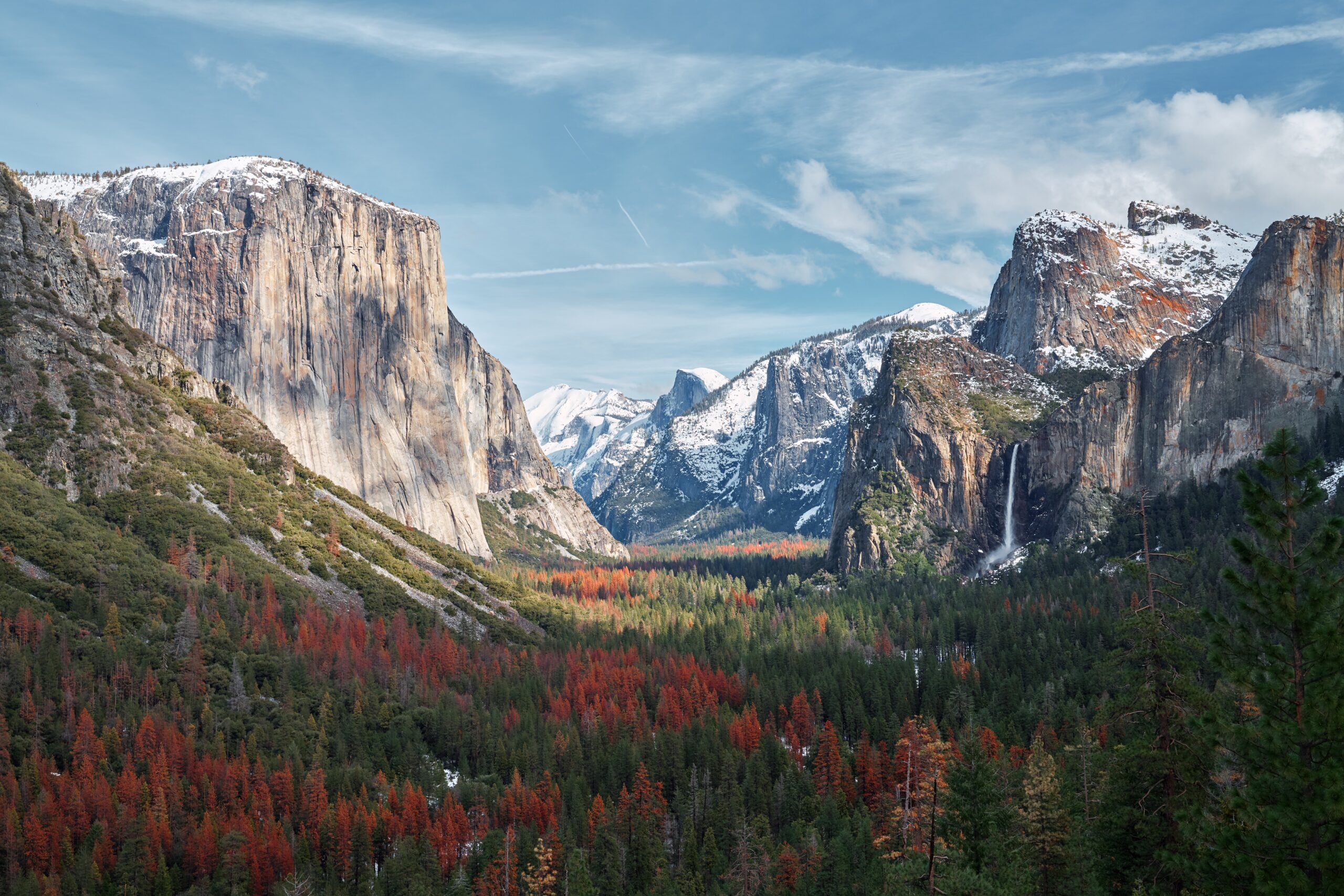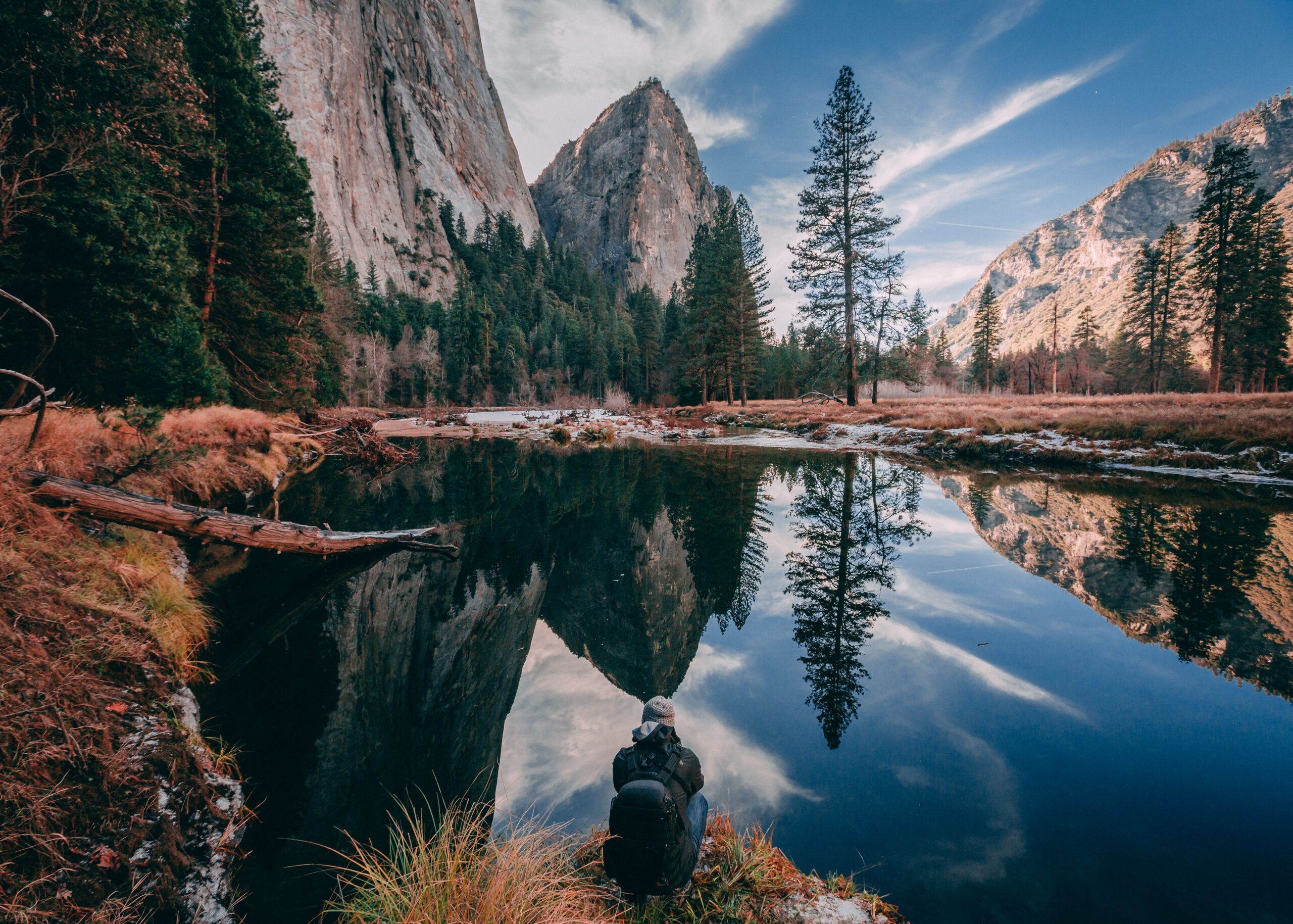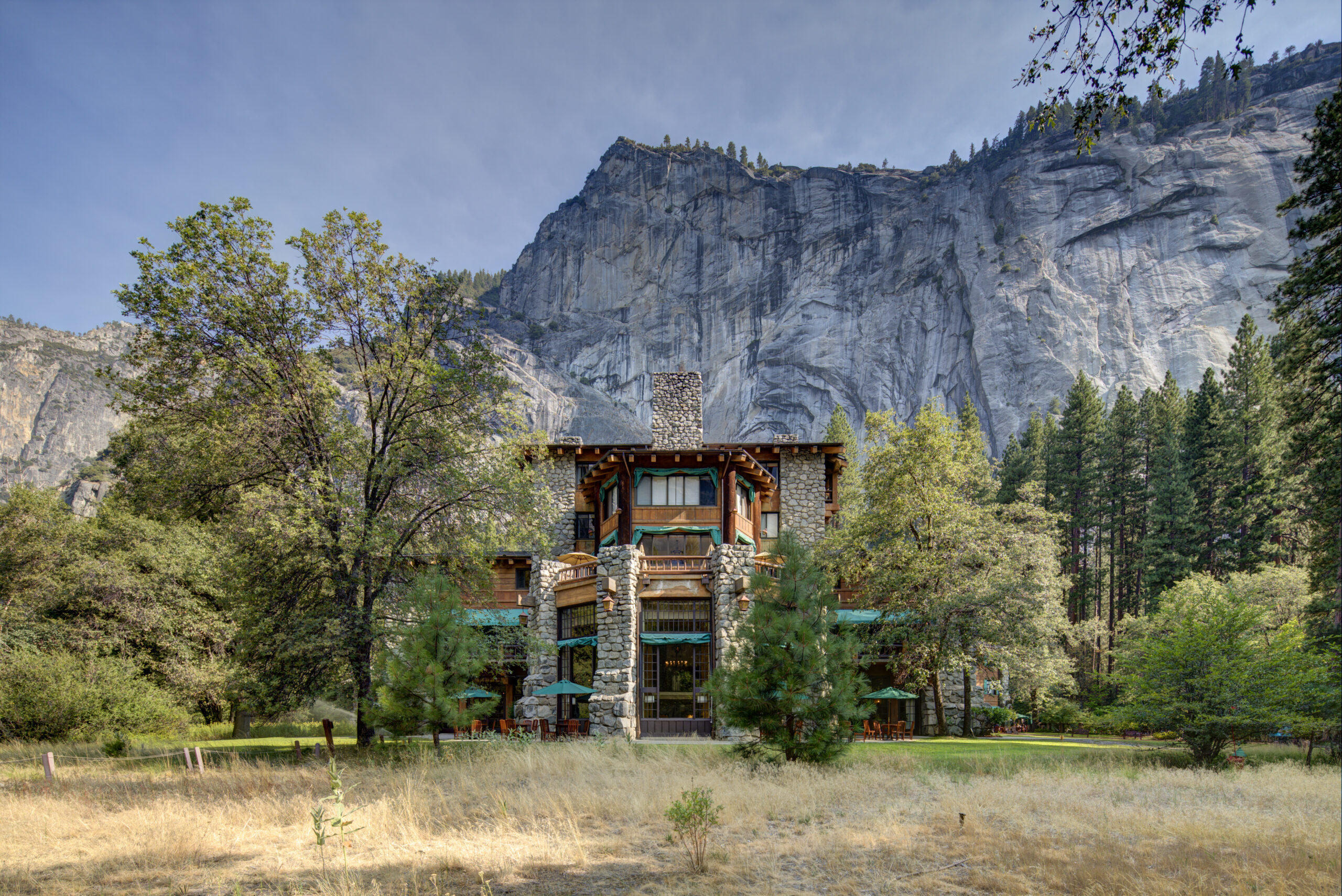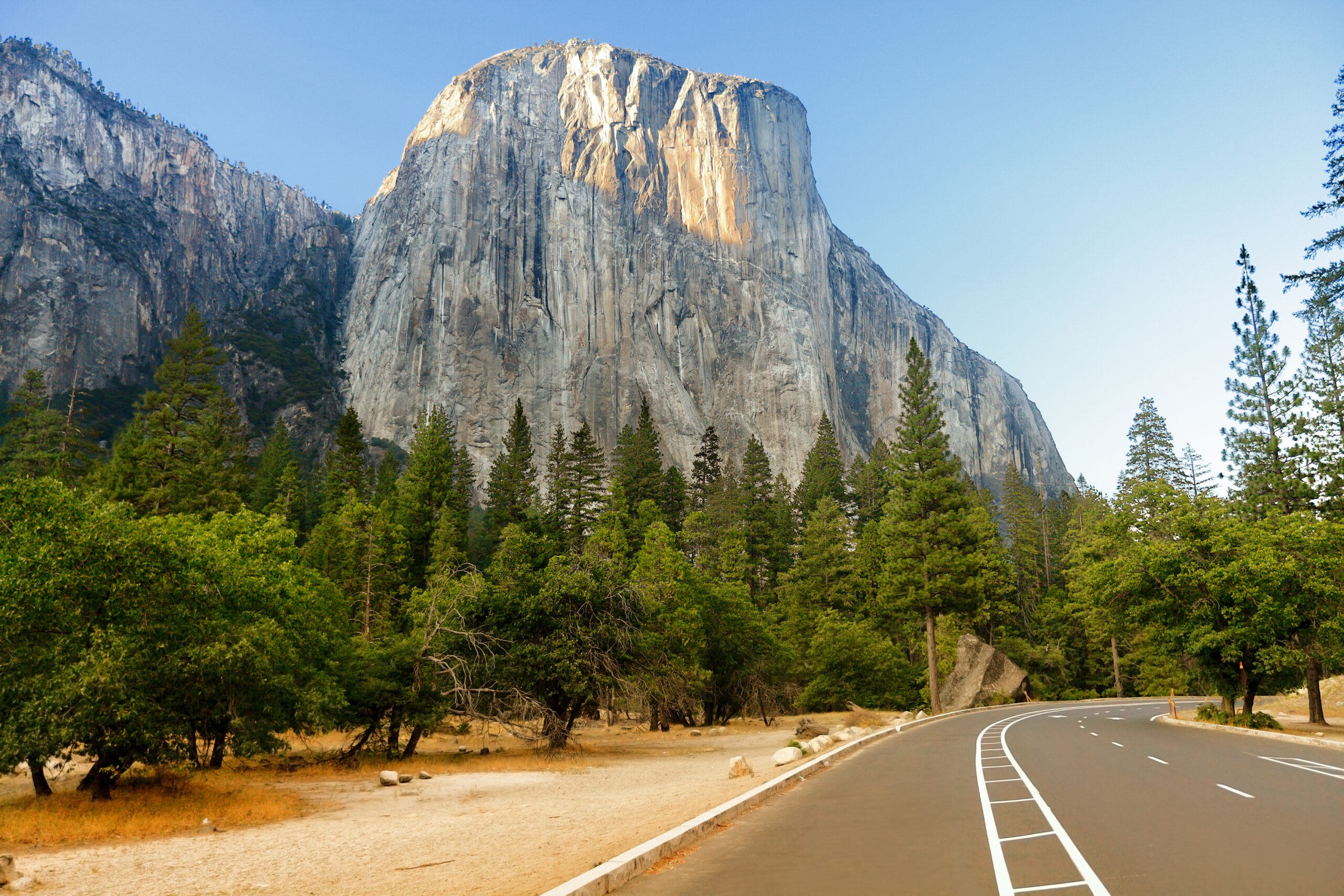How to Experience Yosemite National Park Like a Pro
Yosemite National Park is one of the most popular National Parks in the U.S. for good reason: The easily accessible views of the awe-inspiring Half Dome and El Capitan rock faces, the towering Yosemite Falls, and soaring sequoias of Mariposa Grove make this park a “must see” on any American road trip. Founded in 1890, the park now ranks as the fifth-most-visited park in the country—and by far the most-visited park in California. But don’t fret: Even with the huge number of park goers (Yosemite welcomed 4,422,861 visitors in 2019 alone) there are plenty of ways to enjoy its wonders without having to deal with crowds and traffic. Follow these pro tips for making your first, or any, visit a memorable one by wisely choosing when to go, what to do when you get there, and the best place to stay.
What to Do in Yosemite National Park
Yosemite can roughly be divided into four main areas: The central Yosemite Valley, with most of the facilities, lodging, developed roads and major attractions; the southern Wawona area, with the famed sequoia groves; The central Tuolumne Meadows area, with, Tenaya Lake, Lyell Canyon and plenty of high alpine hiking; and the lesser-visited northern Hetch Hetchy Reservoir area, with its massive dam and dazzling views.
See Yosemite’s Greatest Hits—But Also Look Beyond
Every visitor should see Yosemite’s iconic landmarks for which it is justifiably famous. From road-side viewpoints in Yosemite Valley, you can gaze at the massive rock face of Half Dome, marvel at climbers ascending three-thousand foot cliffs at El Capitan, and admire Yosemite Falls and Bridal Veil Fall, while a drive out of the valley brings you to the famed Glacier Point view. Short paved trails provide perfect photo spots, although in the high season you’ll be sharing the viewpoints with a few hundred friends. Pro Tip: Renting (or bringing your own) bicycle is a great way to cruise through Yosemite Valley and see the sights at your own speed.
The second tier of Yosemite’s sights don’t get the same fame, but would be can’t-miss highlights for any other destination. Mariposa Grove, in the southern edge to the park, allows you stroll among 500 truly incredible giant sequoia trees. Looking a less crowded spot to see sequoias? Hike to see the lesser visited Merced Grove or Tuolumne Grove from Crane Flat near the northwest entrance.
The Hetch Hetchy Reservoir at the northern edge of the park is a dazzling blue cliff-surrounded lake that is as beautiful as it was controversial when it was created in 1938. Hiking trails and campgrounds make this a good alternate Yosemite destination.
Tuolumne Meadows in north central Yosemite is like a park within the park, with soaring views, epic hikes, the scenic Tenaya Lake and Lyell Canyon, its own visitor center and rustic lodging and campgrounds.
Choose a Hike That’s Right for You
With 800 miles of trails in Yosemite’s 748,542 acres, the hiking opportunities here are nearly infinite. And you don’t have to be a world-class athlete to enjoy them. Explore the park website or stop by a ranger station to get a recommendation for a hike that matches your ability and timing.
Day hikes from Yosemite Valley and in Tulomne Meadows are rewarding ways to escape the crowds. Two reasonable, accessible hikes are: The 1.6 mile Mist Trail near Curry Village in Yosemite Valley, which provides prime views of the roaring Merced River and Vernal Fall. It can be a tiring climb, but is very doable for anyone of reasonable fitness. Continue another, steep, 0.75 miles to the top of the falls, then onward six miles to Half Dome. The 1.5 mile Soda Springs/Parsons Lodge in Tuolumne Meadows is a relaxing trail showing off alpine meadows, the Tuolumne River, and bubbling springs. The historic stone lodge at the end of the trail hosts summer seminars with naturalists and artists.
Learn About Yosemite
Free Ranger Walk & Talks give useful hour-long guided tours on topics including geology and wildlife. Guided bus tours provide educational two-to-eight hour trips. You can also sign up for popular classes at Yosemite Conservancy and the Ansel Adams Gallery in art, photography, cooking, and birding. For families, the Yosemite Junior Ranger and Wee Wild Ones programs can get the kids excited about nature.
Where to Stay and Eat in Yosemite National Park
Yosemite has hundreds of hotel rooms and campsites within the park, but they often book up during summer, so plan as far in advance as possible. Pro Tip: Even in the high season, gateway towns around Yosemite offer plenty of available budget and luxury lodging choices that are affordable, reasonable commutes to the park.
In the Park
The Ahwahnee, Yosemite’s iconic property, is a majestic (and pricey) old-school luxury lodge with views of Yosemite Falls. Curry Village in the Valley has multiple dining areas, and more than 400 canvas tents and dozens of cabins. Near the base of Yosemite Falls, the 245-room Yosemite Valley Lodge is a budget-conscious, well-located property. In southern Yosemite, try the affordable 104-room Victorian-style Wawona Hotel. Surprisingly, there are also privately owned vacation rentals within park via Scenic Wonders, a great option for families and longer stays.
For dining, aside from lodge restaurants, Degnan’s Kitchen in the Valley has cafeteria food, with the BBQ and beer Loft above it. The nearby Village Store sells picnic and camping supplies, as does Wawona Store in the south, and the Tuolumne Meadows Store
Yosemite has fifteen official campgrounds with 1,400 individual spots, but they can still book up in the summer—reserve at recreation.gov five months in advance. Obtain a Wilderness permit for backcountry camping, a truly rewarding experience for immersing yourself in the park. Note: Be bear aware in Yosemite, securely store your food to avoid Yosemite’s cute but hungry locals.
Outside the Park
Marioposa, Groveland, Oakhurst and Lee Vining, near Yosemite’s four entrances, provide a wealth of budget motels, vacation rentals, campgrounds and RV sites. A few notable choices are:
South: Tenaya Lodge is an expansive resort with new cabins, villas, and a hotel with multiple pools and restaurants. They also offer their own open-top bus tours of the park.
Southwest: Autocamp offers rustic luxury glamping in 102 new custom Airstream trailers, tents and cabins surrounding an upscale clubhouse with pool.
Northeast: Try the new Rush Creek Lodge (with hotel, villas and spa) or the classic Evergreen Lodge (built in 1921 with modernized cabins). The Evergreen dining room is notable for frontier entrees like Elk Meatloaf and rainbow trout.
Plan Your Trip to Yosemite National Park
COVID-19 Opening Status
Yosemite is open. Yosemite instituted a new day-use pass system in June to ensure social distancing within the park, so you’ll need to plan ahead to make a visit happen this year. But, it’s entirely doable: 1,700 day passes are available daily, with additional passes available for campsite and hotel reservations. Check Yosemite’s website for the most timely updates.
The Best Time to Go to Yosemite
Yosemite is truly a four-season National Park, with each part of the year offering its unique attractions. Spring boasts the biggest waterfalls and scenic rivers swollen by snowmelt. Summer has consistent sunshine, warm weather in which to enjoy dips in lakes and rivers, and cool hiking at higher elevations with wildflower-filled alpine meadows. Fall brings spectacular changing foliage in the valley, refreshing air, and fewer visitors. Winter is its own magical time at Yosemite, with serene snow-blanketed scenery, snowshoeing and skiing opportunities and special events inside cozy lodges.
Pro Tip: Yosemite Valley can be crowded in summer, but the good news is that 95% of the park is undeveloped wilderness, with more than 1,100 square miles in which to roam with hardly a human in sight. So get out of the valley and explore some of the lesser-known sights, then return in the off season to see the major ones. If your schedule allows it, visit during spring and fall shoulder seasons. It’ll help to avoid crowds, save money on lodging, and enjoy cooler temperatures for hiking. Spring and fall weather can be fickle, however, so bring layers of clothes to be ready for changing conditions.
Getting To and Around Yosemite
Yosemite is located in Central California, about 170 miles (just over three hours) due east of San Francisco and 280 miles (five hours) northeast of Los Angeles, in the Sierra Nevada Mountains. Traffic and parking can be difficult once arrived, so take advantage of the free Yosemite shuttle bus system to access top areas within the park. Three routes cover the main roads in Yosemite Valley, the route between the south Visitor Center and the Mariposa sequoias, and between the Valley and Tuolumne Meadows.
Pro Tip: Save money and avoid traffic hassles altogether by taking the YARTS (Yosemite Area Regional Transportation System) bus to the park. YARTS routes access the park’s four entrances via regularly scheduled service from nearby towns and hotels. Round trip tickets start at $9—so it’s a great deal. Jut note: Reservations close 24 hours in advance of each day’s scheduled departure—so you can’t make a same-day reservation.
How Long to Stay
Don’t make the mistake of trying to do all of Yosemite in a single day—it’ll feel like a forced march between photo spots and you’ll miss out on the majestic essence of the park. Try at least two full days—one to explore the Valley, the next to do an area outside it, or spend the second day digging deeper into the Valley. But if you only have one day at Yosemite, pick one area and stick to it, and don’t feel obligated to do the Valley if it’s too crowded.
Pro Tip: On a one-day trip, if summer crowds are too much in the Valley, visit Tuolumne Meadows instead, where you can still get an epic view of Half Dome from Olmstead Point.
>> Next: The Best National Parks and Monuments in California




